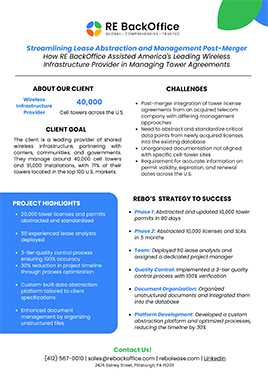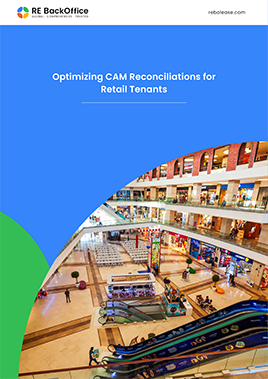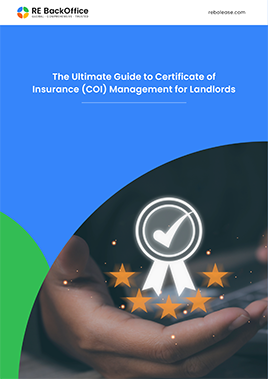
Lease abstraction is a crucial process in lease management that involves extracting and summarizing key information from lease agreements. This process simplifies lease administration by providing quick access to critical lease terms, obligations, and financial data. Whether you manage a small portfolio or oversee large-scale commercial real estate, effective lease abstraction helps improve efficiency, ensures compliance, and minimizes risks.
In this article, we will explore the best practices for lease abstraction, covering everything from defining objectives to leveraging technology for accuracy and efficiency.
Understanding Lease Abstraction
Lease agreements are often complex, lengthy, and contain a vast amount of legal and financial details. Lease abstraction simplifies these contracts by distilling essential information into structured summaries. This allows stakeholders, including property managers, lease administrators, financial analysts, and legal teams, to quickly access critical lease terms without sifting through lengthy documents.
Key Components of a Lease Abstraction
A well-structured lease abstraction typically includes:
- Lease Term: Start date, expiration date, and renewal options
- Rent Details: Base rent, escalation clauses, additional rent, and CAM (Common Area Maintenance) charges
- Security Deposit and Guarantees: Amount, conditions, and refund policies
- Tenant and Landlord Responsibilities: Maintenance, insurance, and repair obligations
- Termination and Renewal Terms: Notice periods, penalties, and early termination clauses
- Sublease and Assignment Terms: Conditions for subleasing or transferring the lease
- Legal Clauses: Compliance requirements, indemnifications, and dispute resolution mechanisms
With lease abstraction, organizations can streamline lease management, enhance financial planning, and mitigate risks associated with lease non-compliance.
Why Lease Abstraction is Important
1. Improves Efficiency in Lease Management
By providing quick access to critical lease data, lease abstraction eliminates the need to review lengthy lease agreements repeatedly. This improves productivity and reduces administrative workload.
2. Enhances Compliance and Risk Management
Non-compliance with lease terms can lead to financial penalties, legal disputes, or missed obligations. Lease abstraction ensures all critical terms are easily accessible, reducing the risk of oversight.
3. Supports Accurate Financial Reporting
Lease costs and obligations impact financial statements, particularly under accounting standards such as ASC 842 and IFRS 16. Proper lease abstraction ensures accurate data for compliance with these regulations.
4. Facilitates Decision-Making
With well-organized lease data, businesses can make informed decisions regarding lease renewals, negotiations, cost optimizations, and portfolio expansion strategies.
5. Reduces Legal Risks
Legal disputes often arise from misunderstandings or misinterpretations of lease agreements. Lease abstraction provides clarity, ensuring both tenants and landlords understand their rights and obligations.
Best Practices for Lease Abstraction
1. Define Clear Objectives and Scope
Before beginning the abstraction process, it is essential to define its purpose. Common objectives include:
- Ensuring compliance with lease obligations
- Preparing for audits and financial reporting
- Streamlining lease renewals and terminations
- Identifying cost-saving opportunities
- Organizing lease data for centralized management
Clearly defining objectives helps in determining which lease elements should be abstracted and how the information should be structured.
2. Gather All Relevant Documents
A lease agreement often includes multiple supporting documents, such as:
- Lease amendments and addendums
- Exhibits and attachments
- Side letters
- Financial statements related to the lease
Before abstraction, ensure you have a complete set of documents to avoid missing critical information.
3. Use a Standardized Lease Abstraction Template
Using a structured template ensures consistency across all lease abstracts. A standard template should capture:
- Lease dates and key milestones
- Financial obligations
- Legal clauses and compliance requirements
- Rights and responsibilities of both parties
A well-defined template ensures uniformity and makes it easier to compare different leases within a portfolio.
4. Ensure Accuracy and Completeness
Lease agreements can have complex legal language and unique clauses that require careful interpretation. Best practices for ensuring accuracy include:
- Using experienced lease professionals or legal experts for abstraction
- Cross-referencing data with the original lease
- Avoiding paraphrasing that could alter the meaning of critical clauses
- Conducting multiple levels of quality checks
5. Utilize Lease Abstraction Software and AI Tools
Manual lease abstraction is time-consuming and prone to human errors. Modern lease management software and Artificial Intelligence (AI)-powered lease abstraction tools can significantly enhance efficiency.
Benefits of using technology include:
- Automated Data Extraction: AI tools can scan and extract lease terms quickly
- Error Reduction: Machine learning algorithms can identify inconsistencies in lease data
- Scalability: Software solutions make it easier to process large lease portfolios
Some popular lease abstraction tools include LeaseAccelerator, CoStar Real Estate Manager, and MRI Software.
6. Verify and Validate Data
Once the abstraction is completed, data verification is essential to ensure accuracy. A quality control process should involve:
- Cross-checking abstracted data against the original lease
- Ensuring key terms are not misinterpreted
- Conducting peer reviews or legal reviews
- Using checklists to confirm completeness
7. Maintain a Centralized Lease Database
Lease data should be stored in a centralized and secure database that allows easy retrieval. A lease management system should provide:
- Searchable lease abstracts for quick access
- Audit trails to track changes and updates
- User access controls to ensure data security
A well-maintained lease database helps organizations monitor lease obligations, track financial commitments, and stay compliant with regulatory standards.
8. Update Lease Abstractions Regularly
Lease terms can change due to amendments, rent escalations, or regulatory updates. Regular updates to lease abstracts ensure data remains relevant and accurate.
A structured update schedule should include:
- Periodic Reviews: Quarterly or annual lease abstraction reviews
- Post-Amendment Updates: Immediate updates when lease amendments occur
- Regulatory Compliance Updates: Ensuring lease data aligns with new legal or financial reporting requirements
9. Train Teams on Lease Abstraction Best Practices
Lease abstraction requires attention to detail and a strong understanding of lease terminology. Investing in training programs helps teams improve accuracy and efficiency.
Training topics should include:
- Lease accounting standards (ASC 842, IFRS 16)
- Lease terminology and interpretation techniques
- Use of lease abstraction software
- Quality control and verification procedures
A well-trained team ensures higher consistency and accuracy in lease abstraction.
10. Ensure Data Security and Compliance
Lease data contains sensitive financial and legal information. Organizations should implement robust data security measures to protect against unauthorized access or breaches.
Security best practices include:
- Role-Based Access Controls (RBAC): Restricting lease data access based on user roles
- Encryption: Ensuring secure storage and transmission of lease information
- Regulatory Compliance: Adhering to GDPR, HIPAA, or SOC 2 guidelines for data security
A strong security framework ensures lease data remains protected and compliant with industry regulations.
Lease abstraction is a fundamental practice for organizations managing lease portfolios, ensuring efficiency, compliance, and strategic decision-making. By following best practices such as:
- Defining clear objectives
- Using standardized abstraction templates
- Leveraging technology for automation
- Verifying data accuracy
- Maintaining a centralized lease database
- Ensuring data security and compliance
Businesses can streamline lease management, reduce risks, and improve financial reporting. Whether you manage commercial real estate, corporate leases, or retail properties, a well-structured lease abstraction process ensures you maximize the value of your lease portfolio while staying compliant with regulatory requirements.
By implementing these best practices, your organization can gain better control, increased transparency, and enhanced decision-making capabilities in lease management.


